

|
|||||||
| S40 / V40 '96-'04 General Forum for the Volvo S40 and V40 (Classic) Series from 1995-2004. |
 Information
Information
|
|
GUIDE : Changing your spark plugsViews : 20172 Replies : 57Users Viewing This Thread : |
 |
|
|
Thread Tools | Display Modes |
|
|
#1 |
|
Senior Member
Last Online: Oct 20th, 2013 20:24
Join Date: Aug 2007
Location: Derbyshire
|
Your spark plugs perform an essential role for your engine and should be monitored/maintained regularly. If plugs fail they can cause all sorts of damaging effects to an engine so you shouldn't cut corners with these.
I always use NGK plugs, they are good quality and cover pretty much every major manufacturer. The two important things to note with plugs are the heat range and the number of electrodes. 1. Heat range - the heat range specifies how quickly heat is dissipated from the plug. If it is a cooler (higher) heat range it will disperse heat more quickly. This can be very important because heat retention in the plug can cause detonation (unwanted ignition in the combustion chamber). The S40 uses heat range 6 as designated on NGK plugs such as the ones I used : BKR6ETCU 2. Electrodes - The electrode is at the tip of the plug and is the bit that goes into the combustion chamber. The number of electrodes is normally one but for the S40 the plugs have 3 electrodes (which makes the plugs a little more expensive). This gives a more even distribution of spark and is designed to encourage a better flame front in the cylinder i.e. a more even burn of the mixture If nothing else you should look at your plugs at least every year to see what's going on in the engine - the plug can tell you if you are too rich/lean and a multitude of other things - pick up any Haynes manual or similar for a description of the various engine conditions shown by your spark plug tips. Anyway, down to business - how to change plugs : Last edited by JSeaman; Aug 28th, 2007 at 08:27. |
|
|

|
| The Following User Says Thank You to JSeaman For This Useful Post: |
|
|
#2 |
|
Senior Member
Last Online: Oct 20th, 2013 20:24
Join Date: Aug 2007
Location: Derbyshire
|
Step 1 - First remove the two torx screws holding the lower half of the engine cover in place
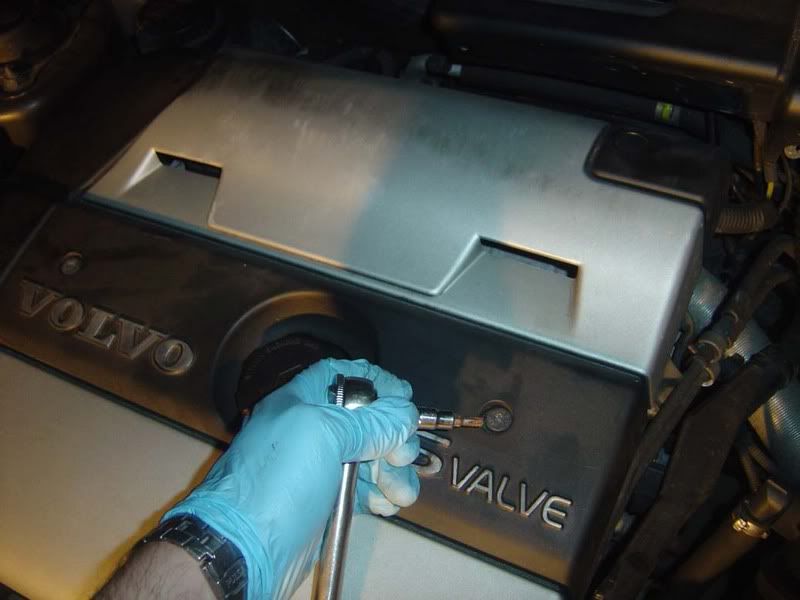 Step 2 - Now remove the third and fourth torx screw and remove the cover away completely 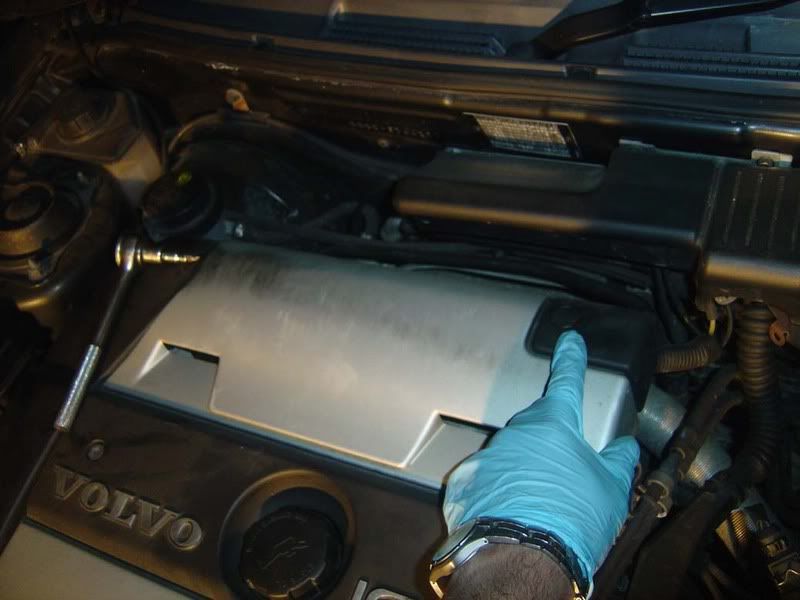 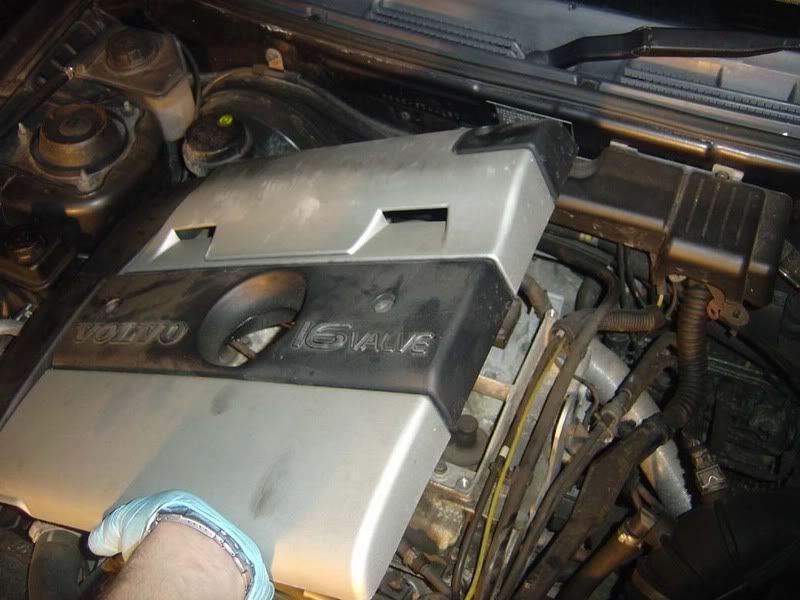 Step 3 - You will be faced with this. Basically you can see two coil packs (one serves cylinder 1 and 4, the other does 2 and 3) and also the HT (High tension) leads that run from the coils to the spark plugs. 
|
|
|

|
|
|
#3 |
|
Senior Member
Last Online: Oct 20th, 2013 20:24
Join Date: Aug 2007
Location: Derbyshire
|
Step 4 - Starting at cylinder 1, remove the HT lead by twisting it from side to side then pulling it from the boot whilst twisting. You should never pull the lead of by the wire because you can damage the internals of the HT lead, the rubber boot is the strongest bit to pull on.
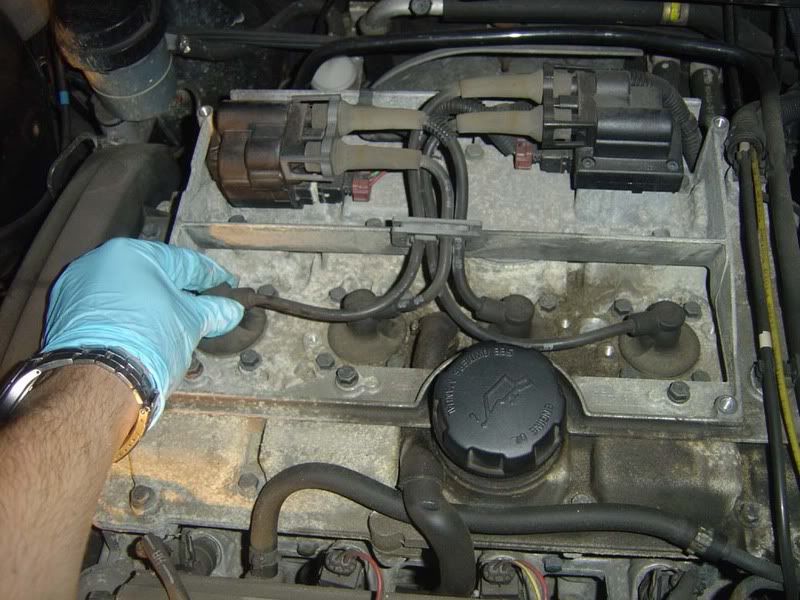 Step 5 - Remove the lead from the spark plug well (you'll notice it is quite a long L shape), and you can look down into the well to see the plug itself. 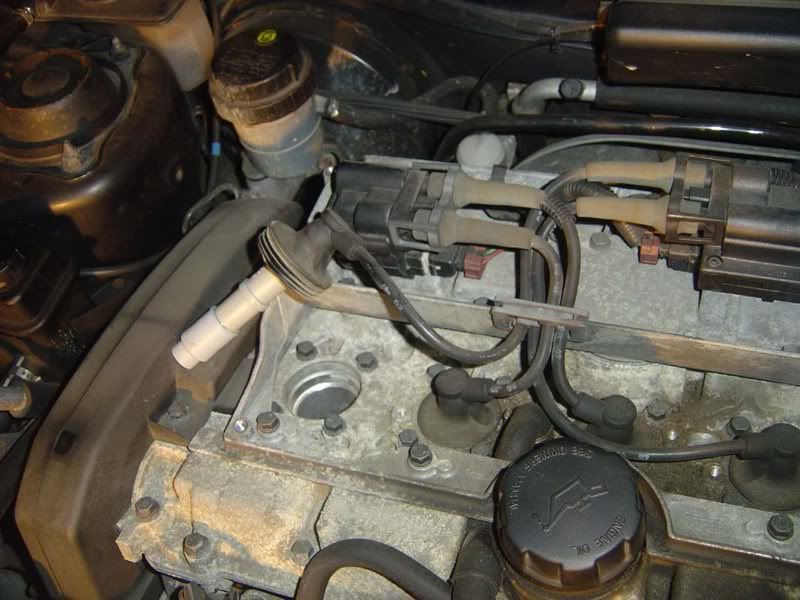 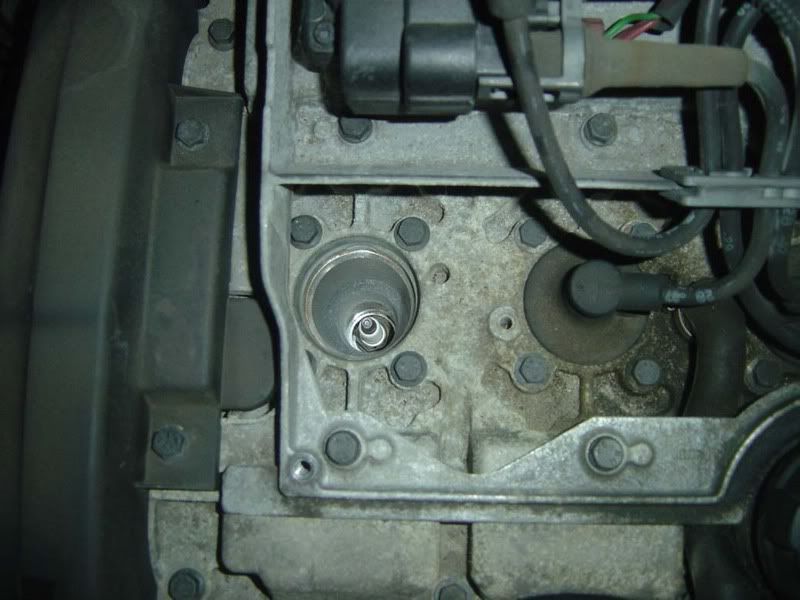 Step 6 - The S40 uses the smaller type of spark plug (there are two commonly used sizes) which is 16mm (5/8 for the old school people). You can use a very deep socket if you have one but typically a socket set will have a plug remover which usually have rubber inserts to pull the plug out as shown in the picture. When removing plugs (especially if they have been overtightened and/or neglected), it is important to try and apply a smooth motion to the ratchet to avoid breaking the ceramic (the white bit of the plug). This is more difficult if they are very tight but try not to bash the ratchet because this is more likely to fracture it. 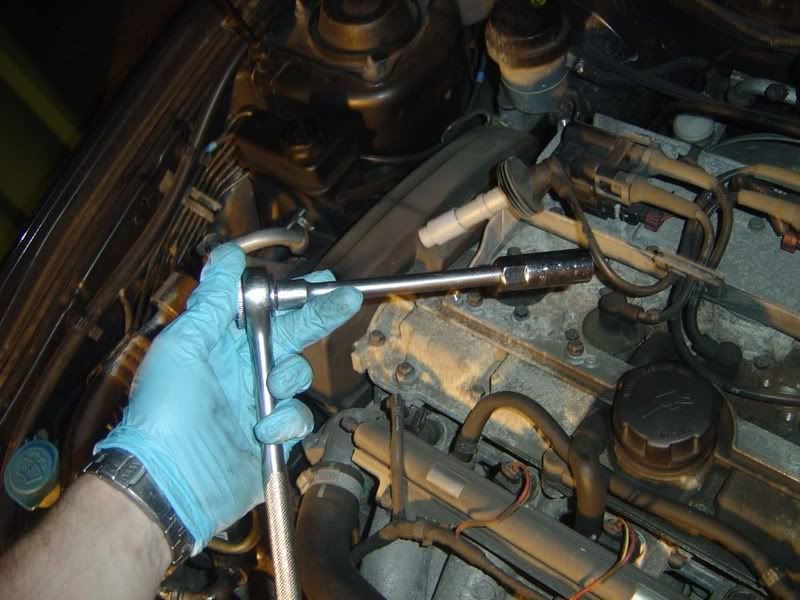
|
|
|

|
|
|
#4 |
|
Senior Member
Last Online: Oct 20th, 2013 20:24
Join Date: Aug 2007
Location: Derbyshire
|
Step 7 - If you haven't got the rubber insert in your plug remover then you can use pliers or a magnetic parts tool. I chose the latter, an infinitely useful tool for retrieving lots nuts/bolts and helping with jobs like this
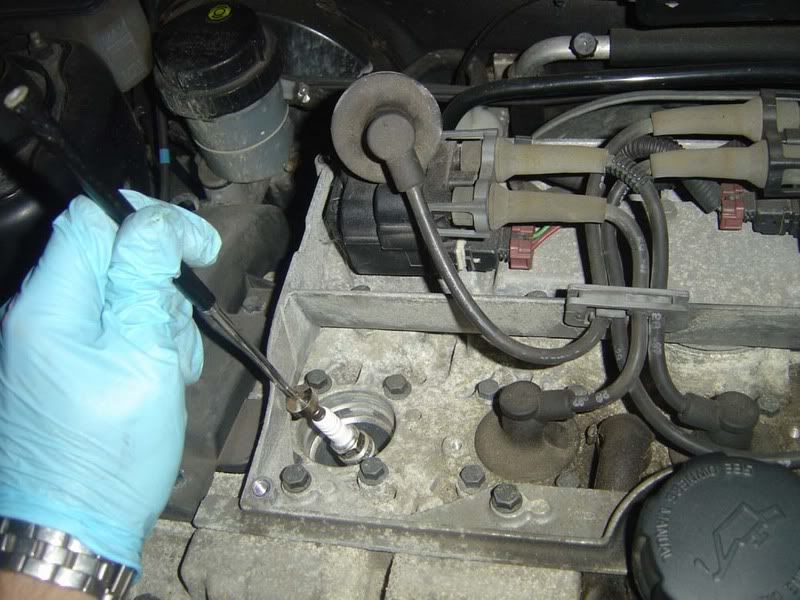 Step 8 - Inspect each plug as it comes out. They should all be the same or start investigating. If they are very black then you could be running rich, very white means probably running lean. There are a whole range of pictures in Haynes to tell you what they mean but a light brown sort of coating is typical as shown on mine 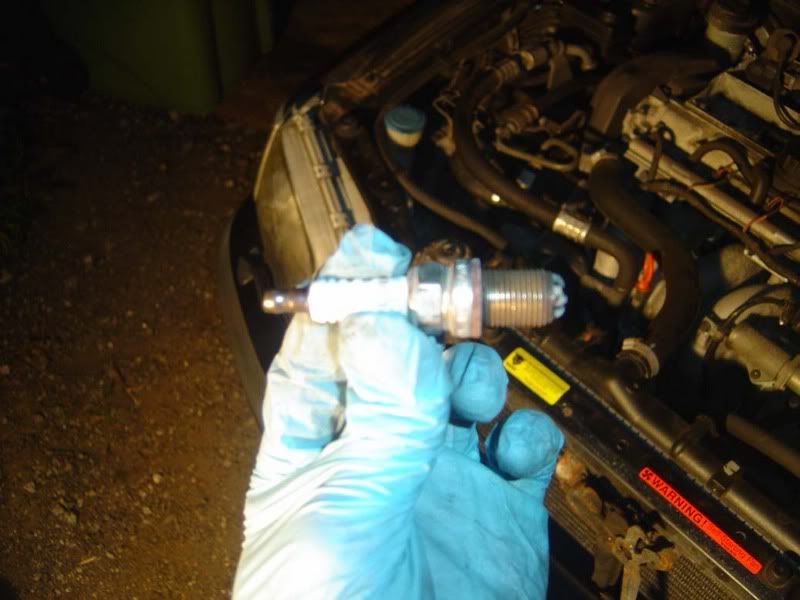 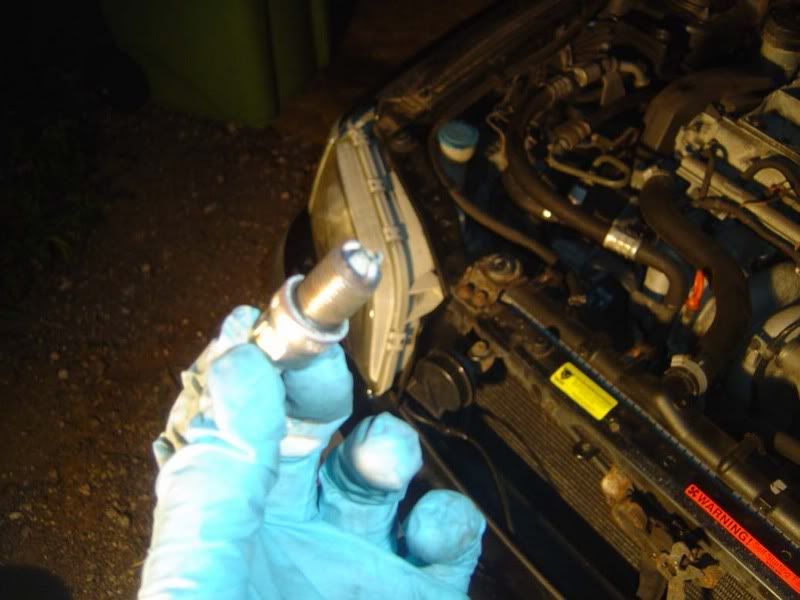
|
|
|

|
|
|
#5 |
|
Senior Member
Last Online: Oct 20th, 2013 20:24
Join Date: Aug 2007
Location: Derbyshire
|
Step 9 - Due to the fact there are 3 electrodes you won't have to 'gap' the plug (set this distance between the centre electrode and the ground electrode) so gently place the plug straight into the well taking care not to damage it. Now tighten the plug up by hand (picture 1) until you hit resistance then tighten with a torque wrench or just a ratchet if you know how tight they shold feel.
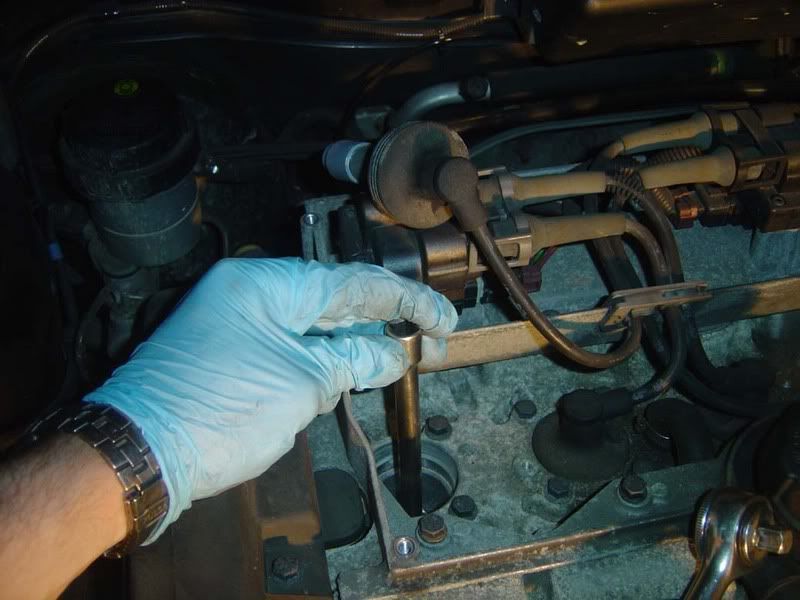 Step 10 - The spark plugs are exposed to the combustion inside the engine so need replacing more often than HT leads typically do but check each one by eye to see if the connectors still look clean and effective. If the leads look worn then replace them (they simply unplug from the coils) 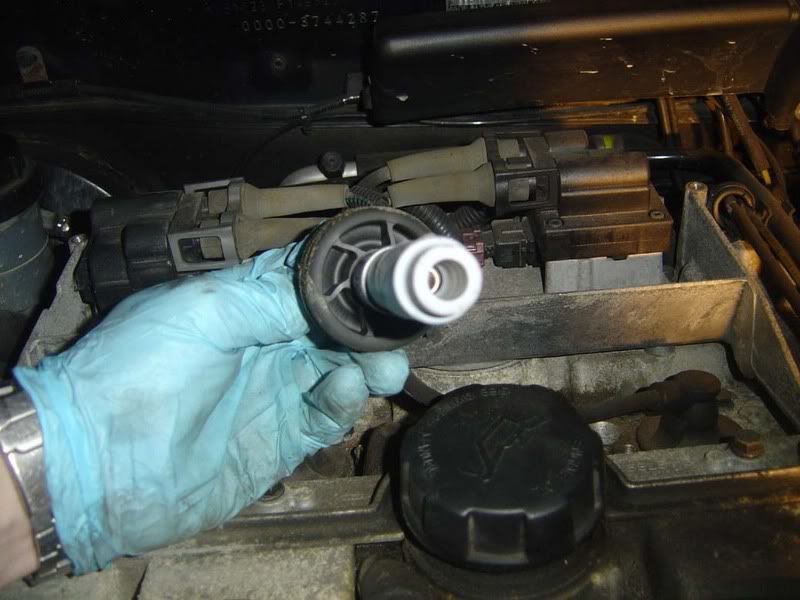 Step 11 - When you have finished you should hopefully have 4 similar plugs looking something like these. I suggest you start the engine up at this stage before refitting the engine cover. Assuming you've done each plug one at a time you shouldn't have any problems and can finish up by refitting the cover and 4 torx screws 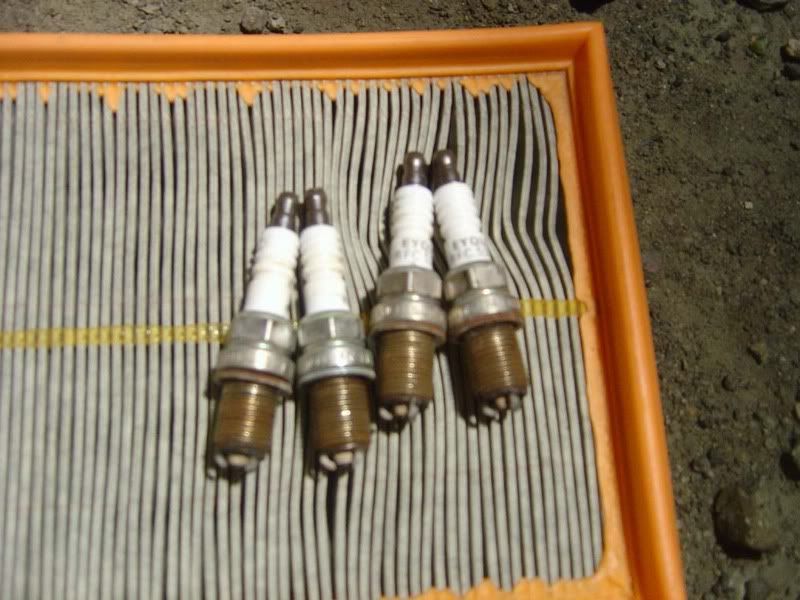
|
|
|

|
| The Following 13 Users Say Thank You to JSeaman For This Useful Post: |
|
|
#6 |
|
Senior Member
Last Online: Jan 11th, 2013 22:01
Join Date: Dec 2008
Location: Cardiff
|
do plugs need to be gapped for a 99 Volvo T4?
If so what is the gap? |
|
|

|
|
|
#7 |
|
Premier Member
Last Online: Jul 9th, 2020 20:08
Join Date: Dec 2007
Location: Halifax West yorkshire
|
Nice guide but if you read the threads relating to Volvo engines and running issues I think you will find genuine Volvo spark plugs are highly recommended especially for the S/V40 and T4 range of cars, it has been proven time and again that genuine Volvo spark plugs can cure poor running issues.
|
|
|

|
| The Following 2 Users Say Thank You to stevo48 For This Useful Post: |
|
|
#8 |
|
Senior Member
Last Online: Jan 11th, 2013 22:01
Join Date: Dec 2008
Location: Cardiff
|
Why is this though?
I know new plugs in general can resolve running problems but I cannot see what added benefit Volvo plugs have over and above Bosch, HGK, Beru etc? Surely they are designed to OE spec? Are people comparing like with like? Have people replaced 'old' branded plugs with 'new' Volvo plugs? Or are people actually comparing new with new? |
|
|

|
|
|
#9 |
|
Master Member
Last Online: Apr 16th, 2021 11:32
Join Date: Aug 2006
Location: Chester
|
Nobody knows the reason, it's just that the T4 engine (in particular) seems to spit its dummy out with non OEM plugs....perhaps it's when people use NGK Patinums or something.
SOme people have no issues at all, others put in NGK or similar, car runs badly, then swap to OEM and the problem goes away. The difference in price is really not worth the hassle imho |
|
|

|
|
|
#10 |
|
Master Member
Last Online: Dec 29th, 2013 22:39
Join Date: Dec 2003
Location: Ashford
|
Its only the turbo cars that are fussy with plugs. Normal replacement plugs can cause misfires and poor running after a few thousand miles. Iridium plugs and Volvo OEM plugs dont seem to have any issues(just be wary of Denso plugs as they had a batch that lost the tips).
|
|
|

|
 |
| Currently Active Users Viewing This Thread: 1 (0 members and 1 guests) | |
|
|